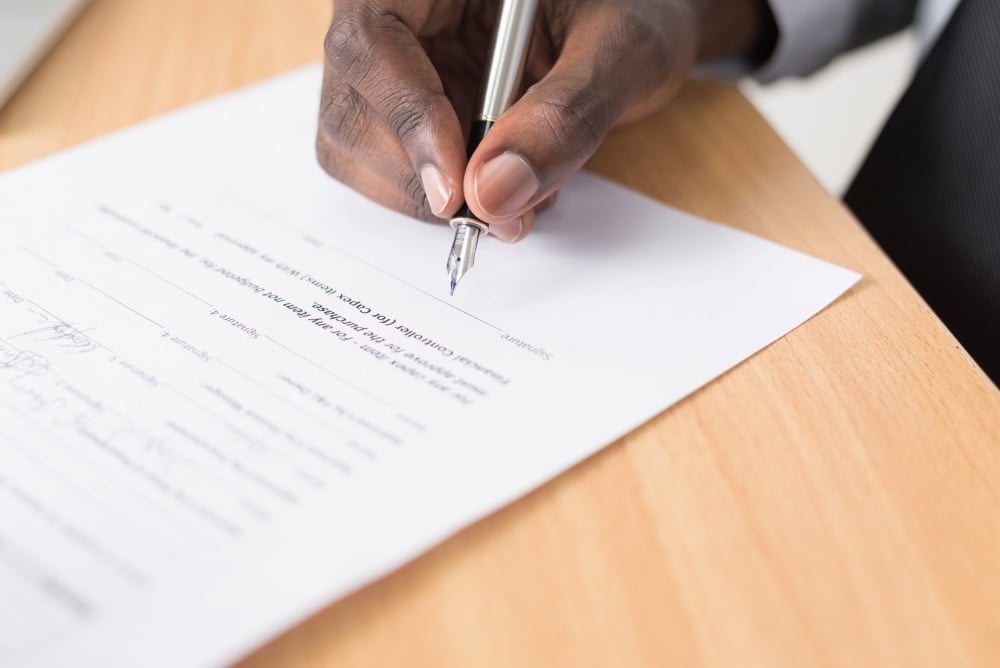

Mastering sponsorship request letter writing is an essential skill to have in your nonprofit toolbox. Acquiring sponsorships can help you reach your company goals quickly while creating strong business relationships. Having great sponsors to partner with can also increase trust in your organization and expand future opportunities for collaboration.
A well-crafted sponsorship letter is one of the basic keys to opening up this fundraising avenue.
A sponsorship letter is a request for partnership and collaboration, primarily focused on nurturing a relationship with a business counterpart. Although you can use it to ask for financial contributions for a fundraising program or effort, it is an opportunity for other forms of partnership, too.
You can ask a business or donor to assist you with your resources, work with you long-term, volunteer, and more. For example, if you’re hosting an event, you may ask for event sponsorship for a venue or other logistical resources. Your ask may also be non-tangible like ambassadorship, airtime, backing, etc.
One of the fundamental ways that a sponsorship request letter differs from a donation or fundraising request letter is incentive. As with any other relationship, this letter should outline an offering from your NPO.
Reflect on what you would like out of this partnership. What do you need from them? How would you like them to help you? Knowing your goals will help you craft a sponsorship request letter that makes it clear what you’re asking for and why them. This is also a chance to tell them about you and what your company vision and cause is.
Next, look into your recipients. Maybe make a list of potential sponsors and why you would like to work with them. Do research into each business and know its values, mission, audience, and other information.
The letter you write is about connecting with them so you should place them as your focus and show why your organizations can work well together.
Nothing will put your letter’s recipient off faster than feeling like you’ve sent them a generic template. Use the research you’ve conducted to write a tailored letter that aims to connect to the reader.
To do this, remember the small details like using a name rather than stating “To Whom It May Concern”. Ensure you get spelling and specific business terms right. And weave in elements that show that you know their business (like their business values, ethos, mission, etc.) and link them to your work.
If there is someone in your organization with a connection with the potential sponsor, ask them to write the letter. The recipient may be more open to getting and reading a letter from someone they know. It gives a face to your organization and helps them connect to your request. It is also another way to create a personal link to the reader.
Should there be no such connection, have your letter signed by your NPO’s leadership (i.e.: the company president or exec). This gives legitimacy to your request and emphasizes its importance.

Think about what you can give to the business in exchange. Many businesses work on a benefits attitude, investing in things that bring them some gain. So, what will you offer them? Make this a central point in your letter, remembering to see your request from their perspective. Try to consider what would benefit them.
Some of the things you can offer include:
Depending on the organization, you can offer them one or more of the benefit options above to choose from. This is the beginning of your collaboration as they get to play an active role rather than passively receiving your letter.
Another choice you can offer is to give them the other participation options and make it known you’re open to various types of collaborations.
Try to consider how much work the person reading your letter may have. Do not take up too much of their time and prioritize clarity. Use short sentences and brief paragraphs. Aim to keep your letter shorter than a page or one and a half pages max. They’re more likely to remember a clearly-stated, concise read than a convoluted three-page letter.
At the end of your letter, outline clear next steps telling them where you will go from here. These should be easy and inform them what they should do after reading. Let them know how they can approve the request and how they can respond. Include a call to action that bolsters them to take action.
|
Subject: Sponsorship opportunity | Business Name x Your Nonprofit’s Name Hi [Recipient’s Name], We at [Your NPO] have been following the work of your business. [Business Name]’s mission and vision of [include vision and/or mission] are in line with the values we hold as a team. We see a wonderful opportunity to collaborate and were wondering if you’d be interested in sponsoring our [event, auction items, fundraising initiative]. Our cause supports [insert your mission and aims]. With this collaboration, your customers can see you take action and work with us to [insert your mission/cause]. This partnership would entail: [Financial/product/space contributions] [Resource/time commitments] [Incentive for their business] I look forward to speaking more about this partnership and to potentially working with you. You are welcome to ask any questions if you need to and I will follow up within the week. Best regards, [Your name] [Leadership signature] |

Now, you’re ready to delve into the world of NPO partnerships and sponsorships! Just keep this guide handy and you’re sure to wow with your writing.

Adie M. is a skilled writer with a strong background in marketing. She is dedicated to creating compelling content for the nonprofit sector. She holds a Postgraduate Diploma in Management, specializing in Marketing, and a Bachelor's degree in Environmental and Geographical Science and Psychology from the University of Cape Town. With experience in digital marketing, Adie combines her technical expertise with a passion for impactful storytelling. She is committed to using her writing skills to support nonprofit organizations and drive positive change.